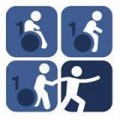You are here
News
2014
Feb 2014 There is growing acceptance in the medical community that stem cells derived from cord blood have value as a therapy for pediatric neurologic injury. But what financial hurdles do parents face when they attempt to access that value for their children? In this article we present case studies of the out-of-pocket costs that parents face when they use their child's own (autologous) cord blood as therapy for cerebral palsy at Duke University Medical Center.
Feb 2014 There should be thousands of children worldwide who already have a cerebral palsy diagnosis and have their own cord blood in storage, based on the epidemiology of the disorder and the inventory of cord blood in family banks. If autologous cord blood therapy for cerebral palsy is accepted as a standard of care, those children are the immediate potential market for therapy. If therapy with matched cord blood donations is also accepted, even more children will potentially have access, but the cost of therapy will go up dramatically, and the search for a matching cord blood unit will complicate their ability to access this therapy.


